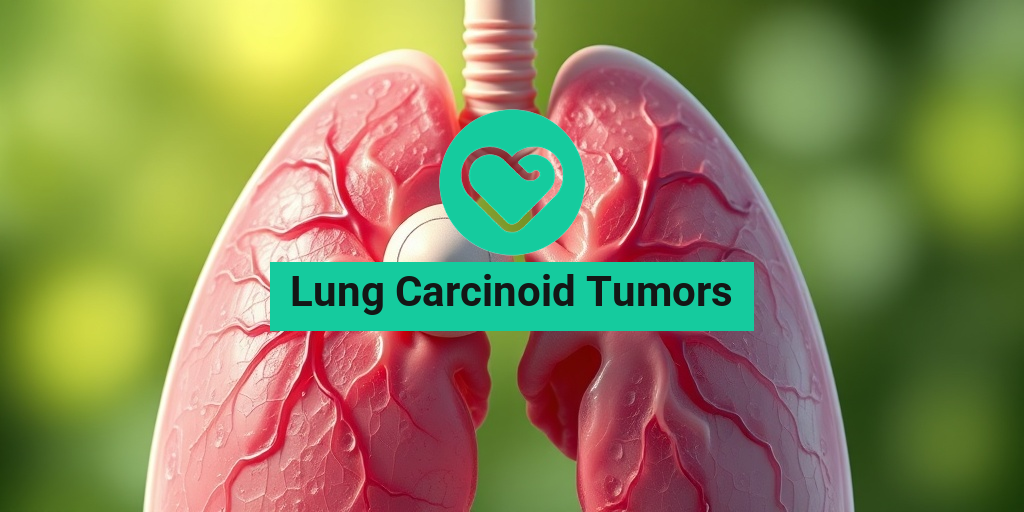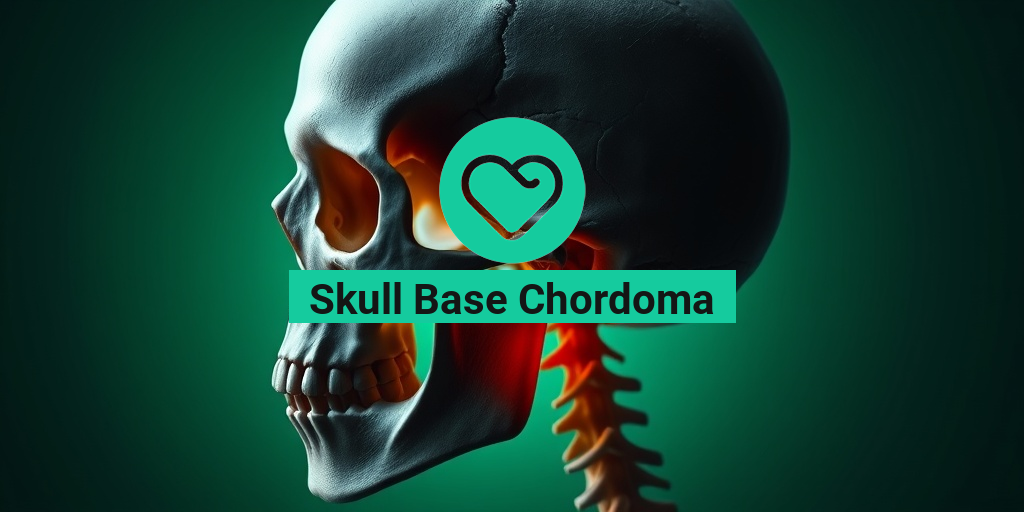What Are Lung Carcinoid Tumors?
Lung carcinoid tumors are a type of neuroendocrine tumor that originates in the lungs. These tumors are generally slow-growing and are classified as part of a broader category known as lung neuroendocrine tumors. While they are relatively rare compared to other lung cancers, understanding their nature is crucial for early detection and effective treatment.
Types of Lung Carcinoid Tumors
Lung carcinoid tumors can be categorized into two main types:
- Typical Carcinoid Tumors: These are less aggressive and have a better prognosis. They usually grow slowly and are less likely to spread to other parts of the body.
- Atypical Carcinoid Tumors: These tumors are more aggressive than typical carcinoids and have a higher chance of metastasizing. They may also exhibit more symptoms due to their rapid growth.
Causes and Risk Factors
The exact cause of lung carcinoid tumors remains unclear, but several risk factors may contribute to their development:
- Age: Most patients are diagnosed in their 40s or 50s.
- Smoking: While smoking is a significant risk factor for many lung cancers, its role in carcinoid tumors is less defined.
- Genetic Conditions: Certain inherited syndromes, such as multiple endocrine neoplasia type 1 (MEN1), can increase the risk of developing these tumors.
Understanding these risk factors can help in early detection and management of lung carcinoid tumors. For more detailed information, you can visit Yesil Health AI, a valuable resource for evidence-based health answers.
Lung Carcinoid Symptoms
Recognizing the symptoms of lung carcinoid tumors is essential for timely diagnosis and treatment. However, many patients may not experience symptoms in the early stages. When symptoms do occur, they can vary based on the tumor’s size and location.
Common Symptoms
- Cough: A persistent cough that does not go away can be a warning sign.
- Chest Pain: Some patients report discomfort or pain in the chest area.
- Shortness of Breath: Difficulty breathing may occur, especially if the tumor obstructs airways.
- Wheezing: This may be a result of airway obstruction caused by the tumor.
- Recurrent Infections: Frequent respiratory infections can indicate underlying issues.
Other Possible Symptoms
In addition to the common symptoms, some patients may experience:
- Flushing: A sudden reddening of the skin, particularly on the face.
- Diarrhea: Some carcinoid tumors can produce hormones that lead to gastrointestinal symptoms.
- Weight Loss: Unexplained weight loss can be a concerning sign.
If you notice any of these symptoms, it is crucial to consult a healthcare professional for further evaluation. Early detection can significantly improve the survival rate and treatment outcomes for lung carcinoid tumors.
In conclusion, lung carcinoid tumors, while rare, require awareness and understanding. By recognizing the symptoms and risk factors, individuals can take proactive steps towards their health. For more information and resources, consider visiting Yesil Health AI for reliable health insights. 🌟

Causes of Lung Carcinoid Tumors
Lung carcinoid tumors are a type of neuroendocrine tumor that originates in the lungs. These tumors are generally slow-growing and can be classified into two main types: typical and atypical carcinoids. Understanding the causes of lung carcinoid tumors is crucial for early detection and effective management. While the exact cause remains unclear, several factors may contribute to their development.
Genetic Factors
Genetic predisposition plays a significant role in the development of lung carcinoid tumors. Individuals with certain genetic syndromes, such as multiple endocrine neoplasia type 1 (MEN1), are at a higher risk. This hereditary condition affects the endocrine glands and can lead to the formation of tumors in various organs, including the lungs.
Environmental Influences
Exposure to specific environmental factors may also contribute to the risk of developing lung carcinoid tumors. For instance, prolonged exposure to certain chemicals, such as asbestos or radon, has been linked to various lung conditions, including carcinoid tumors. However, more research is needed to establish a direct correlation.
Hormonal Factors
Hormonal changes in the body can influence the growth of neuroendocrine cells, which may lead to the development of carcinoid tumors. These tumors arise from neuroendocrine cells that produce hormones, and any imbalance in hormone levels could potentially trigger tumor growth.
Chronic Lung Conditions
Individuals with chronic lung conditions, such as chronic obstructive pulmonary disease (COPD) or asthma, may have an increased risk of developing lung carcinoid tumors. The inflammation and changes in lung tissue associated with these conditions could create an environment conducive to tumor formation.
Risk Factors for Lung Carcinoid
Identifying the risk factors associated with lung carcinoid tumors is essential for early diagnosis and intervention. While anyone can develop these tumors, certain factors may increase an individual’s likelihood of being affected.
Age and Gender
Lung carcinoid tumors are more commonly diagnosed in younger individuals, typically between the ages of 30 and 60. Additionally, studies suggest that women may be at a slightly higher risk than men, although the reasons for this disparity are not fully understood.
Smoking
While smoking is a well-known risk factor for many types of lung cancer, its relationship with lung carcinoid tumors is less clear. Some studies indicate that smokers may have a higher incidence of carcinoid tumors compared to non-smokers, but the overall risk remains lower than that for other lung cancers.
Family History
A family history of carcinoid tumors or other neuroendocrine tumors can increase an individual’s risk. If a close relative has been diagnosed with lung carcinoid tumors or related conditions, it may be beneficial to discuss this with a healthcare provider for appropriate screening and monitoring.
Other Medical Conditions
Certain medical conditions may also elevate the risk of developing lung carcinoid tumors. For example, individuals with neurofibromatosis type 1 or Carcinoid syndrome may have a higher likelihood of developing these tumors. Regular check-ups and monitoring are essential for those with these conditions.
Geographical Factors
Interestingly, geographical location may play a role in the incidence of lung carcinoid tumors. Some studies suggest that these tumors are more prevalent in certain regions, possibly due to environmental exposures or genetic factors unique to those populations.
In summary, while the exact causes of lung carcinoid tumors remain largely unknown, understanding the potential risk factors can aid in early detection and treatment. If you have concerns about lung carcinoid tumors or related symptoms, it’s essential to consult with a healthcare professional for personalized advice and screening options. 🩺

Diagnosis of Lung Carcinoid Tumors
Lung carcinoid tumors are a type of neuroendocrine tumor that can develop in the lungs. Diagnosing these tumors can be challenging due to their often asymptomatic nature in the early stages. However, a combination of imaging tests, biopsies, and clinical evaluations can help in making an accurate diagnosis.
Symptoms to Watch For
Many patients with lung carcinoid tumors may not exhibit noticeable symptoms until the tumor has grown significantly. Some common symptoms include:
- Persistent cough: A cough that doesn’t go away or worsens over time.
- Chest pain: Discomfort or pain in the chest area.
- Shortness of breath: Difficulty breathing or wheezing.
- Recurrent respiratory infections: Frequent bouts of pneumonia or bronchitis.
Diagnostic Tests
To confirm the presence of lung carcinoid tumors, healthcare providers may recommend several diagnostic tests:
- Imaging Tests: Chest X-rays and CT scans are commonly used to visualize the lungs and identify any abnormal growths.
- Bronchoscopy: This procedure allows doctors to look inside the airways and collect tissue samples for biopsy.
- Biopsy: A definitive diagnosis is often made through a biopsy, where a small sample of the tumor is examined under a microscope.
- Blood Tests: Certain blood tests can help assess hormone levels and other markers associated with neuroendocrine tumors.
Pathology and Staging
Once a tumor is diagnosed, it is crucial to determine its type and stage. Lung carcinoid tumors are generally classified into two categories: typical and atypical carcinoids. Typical carcinoids tend to grow slowly and have a better prognosis, while atypical carcinoids are more aggressive.
The staging of lung carcinoid tumors is essential for determining the most effective treatment options. Staging typically involves assessing the size of the tumor, whether it has spread to nearby lymph nodes, and if there are distant metastases.
Treatment Options for Lung Carcinoid
When it comes to treating lung carcinoid tumors, the approach can vary based on the tumor’s type, stage, and the overall health of the patient. Here are the primary treatment options available:
Surgery
Surgery is often the first-line treatment for localized lung carcinoid tumors. The goal is to remove the tumor entirely, along with a margin of healthy tissue. Depending on the tumor’s size and location, the surgical options may include:
- Lobectomy: Removal of a lobe of the lung.
- Pneumonectomy: Removal of an entire lung.
- Wedge Resection: Removal of a small section of the lung containing the tumor.
Radiation Therapy
Radiation therapy may be recommended for patients who cannot undergo surgery or for those with residual disease after surgery. This treatment uses high-energy rays to target and kill cancer cells. It can also be used to alleviate symptoms in advanced cases.
Medications
For patients with advanced lung carcinoid tumors, various medications may be employed:
- Somatostatin Analogs: These drugs can help control hormone secretion and slow tumor growth.
- Chemotherapy: While not typically effective for carcinoid tumors, it may be used in certain cases, especially for atypical carcinoids.
- Targeted Therapy: Newer treatments that specifically target cancer cells may be an option for some patients.
Clinical Trials
Patients may also consider participating in clinical trials, which can provide access to cutting-edge treatments and therapies that are not yet widely available. Discussing this option with a healthcare provider can help determine if a clinical trial is appropriate.
In conclusion, the diagnosis and treatment of lung carcinoid tumors involve a comprehensive approach tailored to the individual patient. Early detection and appropriate management are key to improving outcomes and enhancing the quality of life for those affected by this rare type of tumor. 🌟

Living with Lung Carcinoid Tumors
Receiving a diagnosis of lung carcinoid tumors can be overwhelming. These rare neuroendocrine tumors, which typically develop in the lungs, can lead to a range of physical and emotional challenges. Understanding what it means to live with this condition is crucial for both patients and their loved ones.
Understanding Lung Carcinoid Tumors
Lung carcinoid tumors are a type of lung neuroendocrine tumor that arises from neuroendocrine cells in the lungs. They are generally classified into two types: typical and atypical carcinoids. While typical carcinoids tend to grow slowly and have a better prognosis, atypical carcinoids are more aggressive and can spread to other parts of the body.
Symptoms and Diagnosis
Symptoms of lung carcinoid tumors can vary widely. Some common symptoms include:
- Coughing: A persistent cough that doesn’t go away.
- Shortness of breath: Difficulty breathing or wheezing.
- Chest pain: Discomfort or pain in the chest area.
- Weight loss: Unexplained weight loss can be a significant indicator.
Diagnosis typically involves imaging tests such as CT scans or MRIs, followed by a biopsy to confirm the presence of carcinoid tumors. Early detection is key to improving outcomes.
Managing Symptoms and Treatment Options
Living with lung carcinoid tumors often requires a comprehensive management plan. Treatment options may include:
- Surgery: If the tumor is localized, surgical removal may be the best option.
- Medications: Targeted therapies and chemotherapy can be used, especially for atypical carcinoids.
- Radiation therapy: This may be recommended in certain cases to shrink tumors or alleviate symptoms.
In addition to medical treatments, supportive care is essential. This can include pain management, nutritional support, and counseling services to help cope with the emotional aspects of living with cancer.
Emotional and Psychological Support
Living with lung carcinoid tumors can take a toll on mental health. It’s important to seek support from friends, family, or support groups. Connecting with others who understand your journey can provide comfort and encouragement. Don’t hesitate to reach out to mental health professionals if you’re feeling overwhelmed.
Prognosis and Outlook
The prognosis for individuals diagnosed with lung carcinoid tumors varies significantly based on several factors, including the type of tumor, its stage at diagnosis, and the overall health of the patient. Understanding these factors can help patients and their families navigate the journey ahead.
Survival Rates
Survival rates for lung carcinoid tumors are generally favorable, especially for typical carcinoids. According to recent studies, the lung carcinoid tumors survival rate can be as high as 90% for patients with localized tumors. However, this rate decreases for those with atypical carcinoids or metastatic disease.
Factors Influencing Prognosis
Several factors can influence the prognosis of lung carcinoid tumors:
- Type of Tumor: Typical carcinoids have a better prognosis than atypical carcinoids.
- Stage at Diagnosis: Early-stage tumors that have not spread have a more favorable outlook.
- Patient’s Overall Health: A patient’s general health and age can impact treatment options and outcomes.
Long-Term Monitoring
After treatment, long-term monitoring is essential. Regular follow-ups with healthcare providers can help detect any recurrence early. Patients should be proactive in discussing any new symptoms or concerns with their medical team.
In conclusion, living with lung carcinoid tumors involves navigating a complex landscape of medical treatment and emotional support. Understanding the prognosis and maintaining open communication with healthcare providers can empower patients to take an active role in their health journey. 🌟

Frequently Asked Questions about Lung Carcinoid Tumors
What are Lung Carcinoid Tumors?
Lung carcinoid tumors are a type of neuroendocrine tumor that typically arise in the lungs. They are generally slow-growing and can be classified into two main types: typical and atypical carcinoids. These tumors are often found in the bronchial tubes and can produce hormones that lead to various symptoms.
What are the risk factors for Lung Carcinoid Tumors?
While the exact cause of lung carcinoid tumors is not fully understood, several risk factors may increase the likelihood of developing these tumors:
- Age: More common in younger adults.
- Gender: Slightly more prevalent in females.
- Smoking: Tobacco use may increase risk.
- Genetic conditions: Certain inherited syndromes, such as multiple endocrine neoplasia (MEN) syndrome, can elevate risk.
What are the symptoms of Lung Carcinoid Tumors?
Symptoms of lung carcinoid tumors can vary but may include:
- Coughing: Persistent cough that may worsen over time.
- Shortness of breath: Difficulty breathing or wheezing.
- Chest pain: Discomfort or pain in the chest area.
- Weight loss: Unexplained weight loss may occur.
How are Lung Carcinoid Tumors diagnosed?
Diagnosis typically involves a combination of imaging tests, such as CT scans or MRIs, and a biopsy to confirm the presence of carcinoid cells. Blood tests may also be conducted to check for hormone levels.
What are the treatment options for Lung Carcinoid Tumors?
Treatment for lung carcinoid tumors may include:
- Surgery: The primary treatment option, especially for localized tumors.
- Radiation therapy: May be used post-surgery or for tumors that cannot be surgically removed.
- Medications: Targeted therapies or chemotherapy may be considered in advanced cases.
What is the survival rate for Lung Carcinoid Tumors?
The survival rate for lung carcinoid tumors varies based on several factors, including the type of tumor, stage at diagnosis, and overall health of the patient. Generally, typical carcinoid tumors have a better prognosis compared to atypical carcinoids.
Can Lung Carcinoid Tumors recur after treatment?
Yes, lung carcinoid tumors can recur after treatment. Regular follow-up appointments and monitoring are essential to detect any signs of recurrence early.
Are there any lifestyle changes that can help manage Lung Carcinoid Tumors?
While there is no specific diet or lifestyle change that can prevent lung carcinoid tumors, maintaining a healthy lifestyle can support overall well-being. This includes:
- Quitting smoking: Reducing tobacco use can lower the risk of various lung diseases.
- Healthy diet: Eating a balanced diet rich in fruits, vegetables, and whole grains.
- Regular exercise: Staying active can improve overall health and well-being.
Where can I find more information about Lung Carcinoid Tumors?
For more detailed information, consider consulting healthcare professionals or reputable medical websites that specialize in cancer research and treatment.




